Recently I had the chance to talk with Edward Di Geronimo of Saturnine Games and discuss the upcoming game Antipole DX. Take a look below
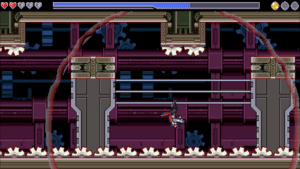
JB: Antipole was originally a game on the DS, the Xbox and PC marketplace. What made you decide to remake the game?
EG: I always loved the gameplay of the original, and it seemed to resonate well with the people that played the original. Unfortunately the original never looked as good as I would’ve liked, and I think that prevented a lot of people from giving the game a chance.
JB: The Nintendo eshop has been a very interesting place for indie games, some succeed and some do not. How have your experiences been with the eshop so far?
EG: The eShop isn’t that different from every other digital store front. Some games do well, while many games don’t. Making games is a tough business, no matter what market you’re looking at. If you’re a big developer, you can release everywhere and find your audience that way. If you’re a small developer, that’s not really a practical approach, so you have to pick your spots more carefully. My game design senses are heavily inspired by Nintendo, and I think it shows in the games I make. As a result, I’ve seen better results when I release games on Nintendo platforms than elsewhere.
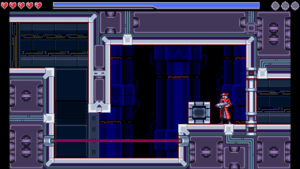
JB: What do you think of miiverse as a means for developers to promote their indie games on Nintendo systems?
EG: I’ve been a big fan of Miiverse. Developer posts get very good visibility, and everyone reading the posts have either a Wii U or a 3DS. It’s a much more effective way of getting word out to my target audience than general social media is. I try to post a screenshot every week or two along with a short development update. The reception has been very positive. I think I’ve been able to build a good following on Miiverse.
JB: What made you decide to make the Wii U one of the target platforms for Antipole DX? What do you think of the audience on Nintendo systems for this type of game? Do you feel they are particularly receptive?
EG: Nintendo has been developing high quality platformer games for decades. I think their audience is highly receptive to them. They also have a core audience that’s been gaming on their systems for decades. This crowd grew up playing pixel art platformers. I think the audience is going to be very receptive toward games like Antipole DX.
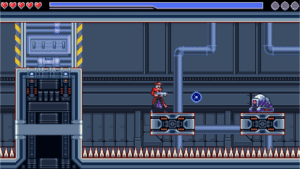
JB: Can you tell us a few of the new things and changes we will see in Antipole DX that are different from the original?
EG: There’s not a lot left that’s the same! The code is largely the same, but we’ve replaced all the assets. The graphics are all new, with a pixel art style that feels like a 16-bit era game. Last time around the audio side of the game suffered due to the tight space restrictions of DSiWare. The music and sound effects are all new this time around, and are much higher quality now that we don’t have to worry about space restrictions. Players familiar with the original game will still find plenty of surprises in the DX version. The levels have all been recreated from scratch. I usually tried to stay faithful to the original designs, but there are plenty of cases where I removed or changed sections that I wasn’t happy with. I made sure to add new sections to every level, and also included several all new levels. The DX version is on track to have about 50% more rooms than the original game did.
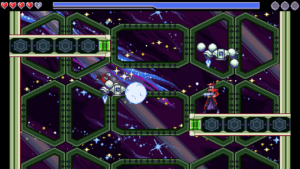
JB: Who are some of your biggest influences as a game developer?
EG: Nintendo is definitely the biggest influence on my design senses, with Mario, Zelda, and Metroid being the games I look at the most. NES/SNES era Capcom is another big influence, with games like Mega Man and Duck Tales standing out. In general I tend to look toward the 8/16 bit era for the basics of gameplay, and look at more modern games for ideas on how to create a nicer experience.
JB: What are some of the biggest influences and inspirations for Antipole DX in particular?
EG: The core gameplay is heavily Mega Man inspired, although you’ll certainly find some hints of Metroid in there. The speed run challenges are inspired by Metroid’s rewards for beating the game faster. The fast speed of the character was originally a nod to Sonic. I was never as big a fan of Sonic as the rest of the team though, so that aspect of it got downplayed over time. I found that Sonic style wide open levels didn’t work well with the gravity mechanic.
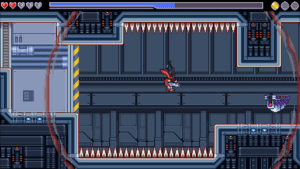
JB: What are some of your biggest concerns for this game?
EG: I don’t think my concerns are any different than they are with other games. I worry about how much time I put into the game, and if it’s worth it. The industry is always changing, so I wonder if the assumptions I made about the market are right. I think everyone gets afraid that other people won’t like the game.
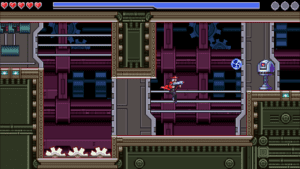
JB: Is there anything you wanted to do differently with Antipole DX that you have not been able to?
EG: Coming into this project, I had a list of things I wanted to add to the original but wasn’t able to. I made sure to get those things in. While there’s always room to add more, I don’t think there’s anything I didn’t get in that I felt strongly about. I do have a list of things that would be a better fit for a sequel though!

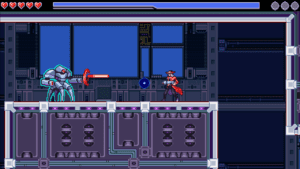
JB: Do you have anything you would like to say to the readership of Real Otaku Gamer?
EG: We went all out to include as much as we could in this game, and make it as great as we could. We’re extremely proud of how it’s turning out. I hope you give it a shot and enjoy it!
……………………………………………..
You can see a trailer for the game below
You can follow Saturnine Games on twitter here and you can follow Edward on twitter here.
Thank you again to Edward and Saturnine Games for the interview

